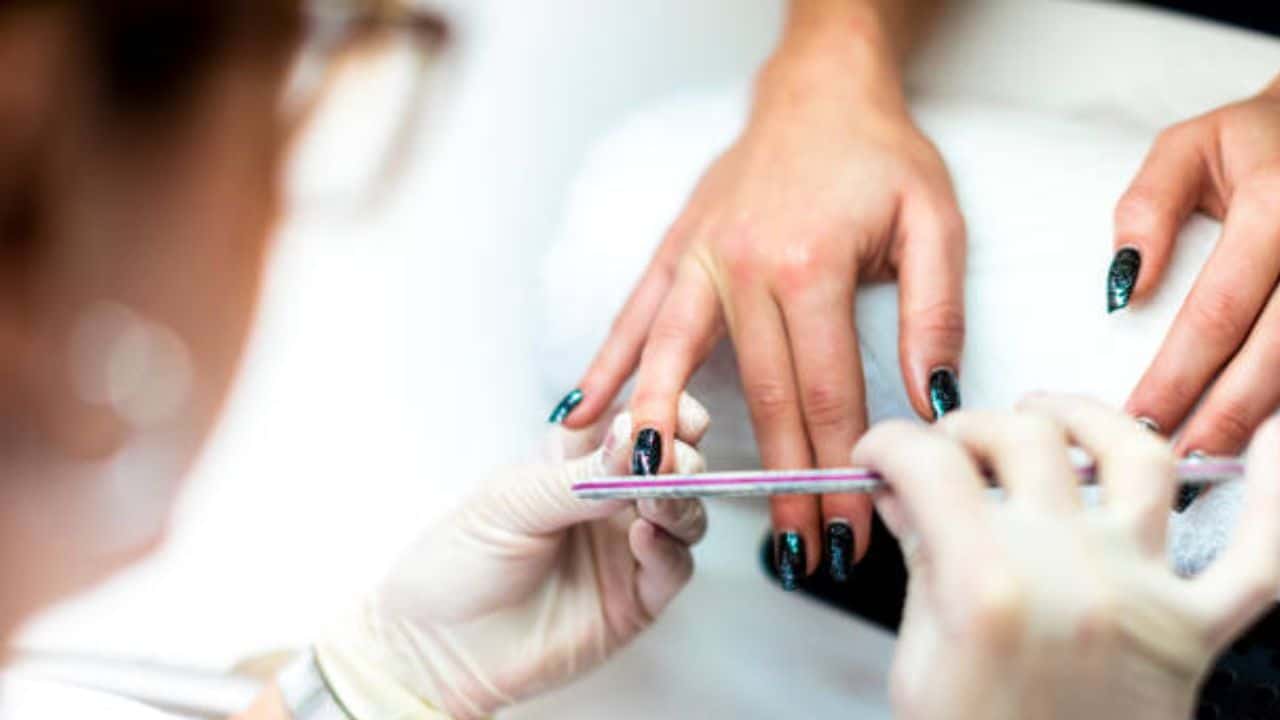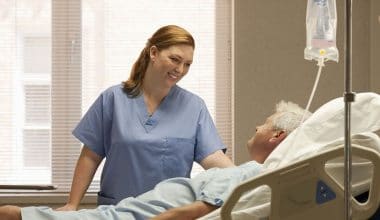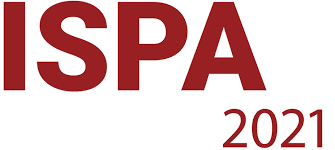Medical schools in Virginia state have gained prestige over the years for their outstanding records in the medical world.
However, For a student to take the career path of a medical professional, the student must first acquire a bachelor’s or master’s degree. Also, you must gain a positive score on the MCAT (Medical College Admission Test).
When admitted into a medical school, spend at least four years completing your study and becoming a doctor of medicine (M.D.) or Doctor of Osteopathic (D.O.) designation.
You will then swivel from the classroom to an accredited medical facility to complete your residency and internship programs.
Finally, you must pass a practical exam and written test before applying for a Virginia Board of Medicine medical license.
Therefore, if you want to study medicine in the united states of America, continue reading this article.
This article provides the best medical schools in Virginia states and information about medical schools and the medical profession.
Table of contents
What is medical school?
This tertiary educational institution, or part of such an institution, teaches medicine and awards a licensed degree for physicians and surgeons.
In most countries, the study of medicine is completed as an undergraduate degree, not requiring essential undergraduate coursework.
What are the Prerequisites for medical school?
The qualifications for becoming a medical doctor in the U.S. may differ by specialization.
Generally, doctors finish a 4-year undergraduate degree program, spend 4 years in a medical institution, and then finish 3-7 years of residency training before they qualify for medical licensing.
Both degree programs typically include complete medical coursework, while proposed doctors can choose a specialization later during their residencies.
A bachelor’s degree program is essential to prepare prospective doctors to enroll in medical school.
Though medical institutions do not need particular degrees for admission, many scholars opt for programs substantial in biology and chemistry.
Some medical schools offer precise pre-med programs that include the needed classes for medical institutions and equip them to take the Medical College Admission Test (MCAT).
Popular courses in a Bachelor of Science (B.S.) in Biology program include:
- Biological studies
- Physics
- Chemistry
- Human genetics
What does a medical doctor do?
A medical doctor, also known as a physician, is a licensed health professional who restores and maintains human health through medical practice.
In addition, they examine patients, review their medical history, diagnose illnesses or injuries, administer treatment, and counsel patients on their health and well-being.
How much does it cost to become a medical doctor?
The actual cost of medical schools varies by institution and by year. However, over the last decade, the expense of medical school has consistently risen.
According to the AAMC, in year 2019, the cost of public medical school averaged $36,755 per year ($147,020 per degree) for in-state students and $60,802 per year ($243,208 per degree) for out-of-state students.
Students attending private medical schools (in-state and out-of-state) had average costs of $59,775 per year ($239,100 per degree).
13 Best Medical Schools In Virginia
The ranking factor for Best Medical Colleges is based on a definite analysis of academic, admissions, financial, acceptance rate, no. of students, graduation rate, no. of programs, and student life data from the U.S. Department of Education, along with millions of reviews from students and alumni.
Furthermore, the ranking compares over 1,000 top colleges and universities in the U.S.
#1. Harvard University
The application deadline for the Medical School at Harvard University is Oct. 22. The application fee at Harvard University is $100. Its tuition is full-time: $61,600.
The faculty-student ratio at Harvard University is 13.1:1. The Medical School has 9,298 full-time faculty on staff.
The MD Program at Harvard Medical School covers two curricular tracks, Pathways and Health Sciences & Technology (HST).
However, since the year 1782, when Harvard Medical School was established, HMS has continued to innovate and lead medical education. Students today are separated into five academic communities, which offer mentoring and counseling and permit team-based study under faculty administration. Students interested in a biomedical research career can apply to the Harvard-MIT Health Sciences and Technology program.
Following the yearly White Coat Ceremony for the new intakes, more HMS scholars stalk the Pathways program. They study core scientific theories and build clinical talents shortly before starting primary clinical experiences in the second year.
In pre-clerkship courses, there are no established letter grades – students are graded either satisfactory or unsatisfactory. Students study at the medical school campus in Boston’s Longwood Medical Area and can finish clinical at affiliated institutions throughout the city.
Furthermore, medical students can opt for joint degrees, like an M.D./Ph.D. and M.D./MBA. They can cross-register in courses at other schools within the university, including the highly regarded Law School and Business School.
Notwithstanding the exhausting course load, HMS ensures its students have some entertainment through functions and social groups. Like the HMS Chamber Music Society and various extracurricular organizations, it is focused on service, identity, and more.
For more information, visit the school’s website http://hms.harvard.edu/
READ ALSO: Top 15 Harvard Scholarships List for International and African Students | 2023
#2. Johns Hopkins University
Located at 733 N. Broadway, Baltimore, MD 21205
The application deadline at the School of Medicine at Johns Hopkins University is Oct. 15. The Johns Hopkins University application fee is $100. Its tuition is full-time: $53,400.
The faculty-student ratio at Johns Hopkins University is 4.8:1. The School of Medicine has 2,300 full-time faculty on staff.
Scholars at the Johns Hopkins School of Medicine study through the Genes to Society Curriculum, which pairs academics with concurrent clinical experience.
Furthermore, every few months, classes break for Intersessions, and exclusive weeklong courses focused on simulation and advanced skills. All students are separated into one of four colleges, Nathans, Sabin, Taussig, and Thomas, which are meant to encourage how a community feels about students from all four years of medical training.
Each college has counselors to oversee students through medical school courses, research support, and career choice. The Colleges also host an annual Colleges Bowl, a day of kickball, races, and tug-of-war competitions.
Learners can obtain a traditional M.D., a Ph.D., or both in about eight years. There are also dual degree programs for an M.D./M.P.H. (Master of Public Health) and an M.D./M.B.A. through other university departments.
The school draws a large sum of research funding from the National Institutes of Health, among other organizations. It runs leading research centers, including the Brain Science Institute and Genetic Medicine.
Also, Johns Hopkins Medicine incorporates the highly regarded Johns Hopkins Hospital, which is particularly known for housing the only pediatric and eye trauma centers in Maryland.
In conclusion, the medical campus is in Baltimore, and scholars can live in the Lowell J. Reed Medical Residence Hall, though housing is not guaranteed. Students can participate in more than 40 groups, some coordinating community service projects throughout Baltimore.
SEE ALSO: Johns Hopkins University Acceptance Rate in 2023 | Admission
#3. Stanford University
Located at 291 Campus Drive, Li Ka Shing Building, Stanford, CA 94305.
The School of Medicine at Stanford University has an application deadline of Oct. 1. The application fee at Stanford University is $95. Its tuition is full-time: $58,197. The faculty-student ratio at Stanford University is 2.1:1. Equally, the School of Medicine has 1,046 full-time faculty on staff.
#4. University of Pennsylvania (Perelman)
The Perelman School of Medicine at the University of Pennsylvania (Perelman) has an application deadline of Oct. 15. The application fee at the University of Pennsylvania (Perelman) is $90.
Its tuition is full-time: $57,884. The faculty-student ratio at the University of Pennsylvania (Perelman) is 4.5:1. The Perelman School of Medicine has 2,625 full-time faculty on staff.
Again, the University of Pennsylvania is home to the first medical institution and the first school hospital in the nation. Today, the School of Medicine is affiliated with the Hospital of the University of Pennsylvania, Penn Presbyterian Medical Center, and Pennsylvania Hospital.
However, students can obtain M.D., Ph.D., M.D.-Ph.D., master’s, M.D.-master’s, or post-doctoral degrees. Students can multiply up on degrees at any other school at Penn, such as the highly regarded Wharton School. There are certificate programs in Global Health, Women’s Health, and Aging.
There are about 100 student organizations to check out, from Penn Med SALSA to the Prison Health Interest Group.
Finally, the school offers several global health opportunities, including a Spanish language immersion program in Mexico and South America. Students can live on the Penn campus in University City or find off-campus housing throughout Philadelphia.
#5. University of California–San Francisco
The Medical School at the University of California–San Francisco has an application deadline of Oct. 15. The application fee at the University of California–San Francisco is $80. Its tuition is full-time: $34,977 (in-state) and full-time: $47,222 (out-of-state). The faculty-student ratio at the University of California–San Francisco is 4:1. Last, the School of Medicine has 2,564 full-time faculty on staff.
#6. Columbia University
Located at 630 W. 168th Street, New York, NY 10032
The application deadline for the College of Physicians and Surgeons at Columbia University is Oct. 15. The application fee at Columbia University is $110. Its tuition is full-time: $61,146. The faculty-student ratio at Columbia University is 3.4:1. Finally, the College of Physicians and Surgeons has 2,087 full-time faculty on staff.
READ ALSO: 15 Cheapest Caribbean Medical Schools You Can Afford in 2023
#7. University of California–Los Angeles (Geffen)
Located at 885 Tiverton Drive, Los Angeles, CA 90095
The application deadline for the David Geffen School of Medicine at the University of California–Los Angeles (Geffen) is Oct. 17. The application fee at the University of California–Los Angeles (Geffen) is $95. The school’s tuition is full-time: $35,187 (in-state) and full-time: $47,432 (out-of-state). The faculty-student ratio at the University of California–Los Angeles (Geffen) is 3.8:1. The David Geffen School of Medicine has 2,723 full-time faculty on staff.
Further, the University of California—Los Angeles David Geffen School of Medicine emphasizes lifelong education for its medical undergraduates. The medical school curriculum is split into three phases: Human Biology and Disease, Core Clinical Clerkship, and 4th Year Colleges.
Also, medical students at this University can earn a combined degree, such as an M.D./Ph.D. through the Medical Scientist Training Program, an M.D./M.B.A. with the UCLA Anderson School of Management, or an M.D.-Oral Surgery Residency.
Finally, a few joint degree programs are offered in combination with other institutions, including the Charles R. Drew University of Medicine and Science/UCLA Medical Education Program, designed for undergraduates who want to work in disadvantaged rural and urban communities.
#8. Washington University in St. Louis
Located at 660 S. Euclid Avenue, St. Louis, MO 63110
The application deadline for the School of Medicine at Washington University in St. Louis is Dec. 1. The application fee at Washington University in St. Louis is $80. Its tuition is full-time: $65,044. However, the faculty-student ratio at Washington University in St. Louis is 4.4:1. The School of Medicine has 2,164 full-time faculty on staff.
Importantly, every student at the Washington University School of Medicine in St. Louis can tailor their medical education to readjust their interests in various ways. Students can take electives as early as their first year, get involved in research projects, and earn an extra master’s degree with a fifth year of learning. First-year scholars will pass or fail a class but will not be assigned grades. M.D. students are graded on an honors/high pass/pass/fail scale for the remaining three years.
#9. Cornell University (Weill)
Located at 1300 York Avenue, New York, NY 10065
The Weill Cornell Medical College application deadline at Cornell University (Weill) is Oct. 15. The application fee at Cornell University (Weill) is $100. The school’s tuition is full-time: $57,050. Moreso, the faculty-student ratio at Cornell University (Weill) is 4.2:1. The Weill Cornell Medical College has 1,731 full-time faculty on staff.
#10. Mayo Clinic School of Medicine
The school is located at 200 First Street SW, Rochester, MN 55905
The application deadline for the medical school at Mayo Clinic School of Medicine (Alix) is Oct. 1. The application fee at Mayo Clinic School of Medicine (Alix) is $120. The school’s tuition is full-time: $55,500. The faculty-student ratio at Mayo Clinic School of Medicine (Alix) is 2.7:1. Again, the medical school has 834 full-time faculty on staff.
Furthermore, the Mayo Clinic School of Medicine (Alix) is the teaching arm of the Mayo Clinic. Although the Mayo Clinic School of Medicine (Alix) is based in Rochester, Minnesota, scholars may also have the chance to study and finish turns at the Mayo Clinic campuses in Phoenix and Jacksonville, Florida. Medical students may also study at one of the many sections of the affiliated Mayo Clinic Health System.
#11. New York University (Langone)
The school is at 550 First Avenue, New York, NY 1001.
The application deadline for the School of Medicine at New York University (Langone) is Oct. 15. The application fee at New York University (Langone) is $100. The faculty-student ratio at New York University (Langone) is 2.2:1. The School of Medicine has 1,059 full-time faculty on staff.
Equally, the NYU School of Medicine is located in the Langone Medical Center on the east side of Manhattan, overlooking the East River. NYU School of Medicine students can earn M.D.s, Ph.D.s, or both via a dual degree program. Particularly highly ranked programs in the NYU School of Medicine include those focused on drug and alcohol abuse and AIDS.
SEE ALSO: How to Write a Medical School Resume in 2023| See Samples
#12. Duke University
The application deadline for the School of Medicine at Duke University is Oct. 15. The application fee at Duke University is $85. Its tuition is full-time: $59,100. The faculty-student ratio at Duke University is 3:1. The School of Medicine has 1,488 full-time faculty on staff.
#13. University of Pittsburgh
The application deadline of the School of Medicine at the University of Pittsburgh is Oct. 15. The application fee at the University of Pittsburgh is $100. The school’s tuition is full-time: $56,004 (in-state) and full-time: $58,186 (out-of-state). The faculty-student ratio at the University of Pittsburgh is 4:1. This School of Medicine has 2,326 full-time faculty on staff.
Conclusion
In conclusion, Medical schools in Virginia state has gained prestige over the years following their outstanding record in medical education.
So, students who want to tow the career path as medical professionals must first gain a bachelor’s or a master’s degree. Gaining this degree from one of the best medical schools in Virginia will get you a certificate that is recognized world wide.
Hence, this article is written to help you make a choice and avoid any sense of dilemma. It provides tuition, the number of programs, and the student-to-faculty ratio. This will enable you choose the one that suits your pocket, learning type and program type.
References
- USNews-Best medical schools
- Niche – best colleges in Virginia
- Universities.com- best medicine colleges in Virginia
- study.com- medical schools in Virginia with degree programs
- VAFP- Virginia medical schools
Recommendations
- Delete Cyber-bullying Scholarship
- University of Strathclyde Excellence Scholarship For Undergraduate Students
- World Best Medical School Rankings
- Best Medical Schools in Vancouver
- 13 Cheapest Law Schools in California
- 17 Best Medical Schools in Nigeria
- 15 Cheapest Art Schools In Virginia
- Best Business Schools
- Best Ireland Medical Schools for Canada Students
- 15 Best Medical Schools in Ukraine for International Students
- 13 Cheapest Medical Schools In Virginia





